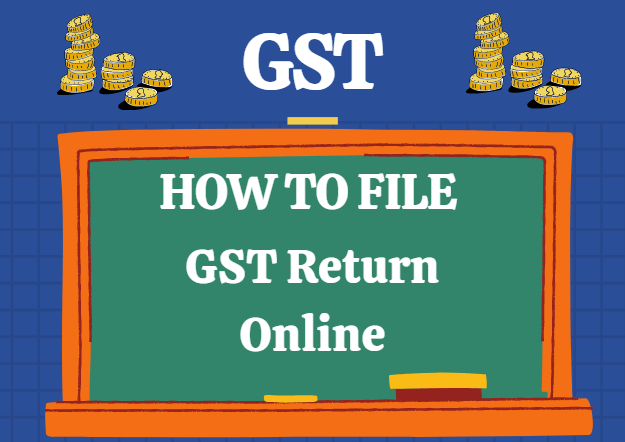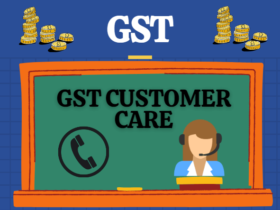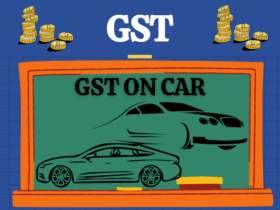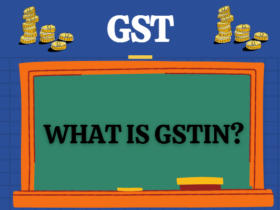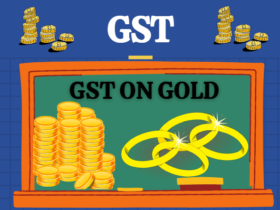GST Return is essential for filing all GSTs. Everyone who falls under the GST Act will have to give their income to the tax department of India.
However, This known as a return and includes details of each sale and purchase.
All registered individuals, merchants, organizations, and registered companies required to submit details of their sales and purchases of goods and services as well as the tax paid and collected.
Such details submitted by filing GST return status. This return is a basis on which the tax authorities calculate the tax liability. A registered GST user will have to file a return, which includes; Purchase, sale, output GST and input credit of GST.
A registered user has to submit 4 forms for filing his GST return status, which is; Return for purchase, return for sale/supply, monthly return, and annual return. Those who have opted for a composition scheme will have to submit quarterly returns.
Therefore, Under GST Return, a registered dealer has to file GST returns that broadly include:
- Purchases
- Sales
- Output GST (On sales)
- Input tax credit (GST paid on purchases)
While business owners have to go twice every month to file Goods and Services Tax, they will also have to file two additional times in half. Before proceeding in the process of filing GST returns, it is important to understand some additional things.
How to File GST Return Online?
Every manufacturer, dealer, supplier, and consumer registered under GST has to file GST returns every year. Return filing has been fully automated in the new tax system.
However, You can file GST returns online through the Goods and Services Tax Network’s app or software. You can take the following steps to file GST returns online:
- First, go to the GST portal and log into your account using the 15-digit GST identification number allotted to you based on the state code and PAN.
- Next, upload your invoices on the GST portal. Each invoice you upload will be allotted an invoice reference number.
- The next step after uploading the invoices is to file the outward return, inward return, along with the monthly return.
- The outward supply returns will be filled in GSTR-1, which is available in the information section on the GST Common Portal till the 10th of every month.
- The outward return for the supplies is done through GSTR-2A.
- Follow this step by verifying and modifying the outward supply details along with the credit and debit notes.
- The inward supplies details of the taxable goods and services need to be furnished in GSTR-2 Form.
- The recipient of the GSTR-1A has the option to modify the details presented later on the outgoing and inward supplies. However, the supplier has the power to accept or reject the modifications made.
Types of Returns applicable under the new GST Law
| Form | Particulars | Frequency | Due Date |
|---|---|---|---|
| GSTR – 1 | Outward supplies Return | Monthly | 11th of the next month. |
| GSTR – 2 | Inward supplies Return | Monthly | 15th of the next month. |
| GSTR – 2A | Read only documents for the recipient, to verify the details uploaded by the seller in GSTR-1. | Monthly | 15th of the next month |
| GSTR – 3 | Auto populated document based on the details filled in GSTR-1, GSTR-2 and tax liability of any preceding period. | Monthly | 20th of the next month |
| GSTR – 3B | Inward and Outward supply summary | Monthly | 20th of the next month |
| GSTR – 4 | Return for composition dealers | Quarterly | 18th of the next month ending the quarter for which return needs to be filed. |
| GSTR – 5 | Return for Non-resident taxable person | Monthly | 20th of the next month |
| GSTR – 6 | Return for Input service distributor | Monthly | 13th of the next month |
| GSTR – 7 | Return for taxpayers which are required to deduct TDS | Monthly | 10th of the next month |
| GSTR – 8 | Return to be furnished by the E-commerce platform which is required to collect TCS | Monthly | 10th of the next month |
| GSTR – 9 | Annual return for normal registered taxpayers | Annual | 31st December following the financial year end |
| GSTR – 9A | Annual return for taxpayers registered under composition scheme | Annual | 31st December following the financial year end |
| GSTR – 9B | Annual return for E-commerce platforms which are required to collect TCS | Annual | 31st December following the financial year end |
| GSTR – 9C | Annual return for the taxpayers who are required to get the accounts audited by CA | Annual | 31st December following the financial year end |
| GSTR – 10 | Annual return for the registered taxpayer whose GST registration got cancelled | Once, after the registration of GST is cancelled or surrendered | Within 3 months from the date cancellation or the date of cancellation; whichever is later |
| GSTR – 11 | Return for Unique Identification Number holders | Monthly (as per applicability) | 28th of the next month in which the inward supplies are received |
READ ALSO : GST Invoice Format Details and Essential Information
Various Types of GSTR Forms
GSTR 1
- GSTR-1 is a return form that contains detailed information of all external goods and services carried by the general registered taxpayer as per GST law.
- GSTR-1 contains details of invoices, debit notes, credit notes, and revised invoices for outward goods and services.
- Monthly returns are filed by the 10th of the following month. However, it can also be extended by the Commissioner to any class of person after the 10th.
GSTR 2
- Unlike GSTR-1, GSTR-2 is a form that contains detailed information about the inward supply of goods and services.
- It includes details of purchases made by taxpayers from both registered and unregistered taxable persons, information about the debit notes, credit notes.
- The due date for filing GSTR-2 is the 15th of the following month. However, the process of making any necessary changes and filing is usually done from the 11th to the 15th of the following month.
GSTR 2A
- It is a read-only document that auto-populates when the vendor files a GSTR-1. Thus, GSTR-2a enables the buyer to verify the details submitted by the seller.
- The buyer or recipient also has the right to reject, accept, modify or keep pending invoices based on the details filled by the seller.
- It is available to each registered normal taxpayer.
- In case of any mismatch, the recipient can accept, reject, modify or keep pending invoices.
GSTR 3
Taxpayers filling this form already have their details electronically updated along with GSTR-1 and 2 forms.
Therefore, Taxpayers should examine and verify the above forms if necessary, and also provide the details below.
- The input tax credit, liability, and cash ledger details.
- CGST, SGST, and IGST tax payment details.
- Excess payment repay claim or credit request.
GSTR 3B
- It is a summarized monthly return of outward and inward supplies.
- It is filled separately by both purchasers and suppliers.
- GSTR-3B is a self-declaration by the taxpayer of the GST tax liabilities for the concerned period.
- Every normally registered taxpayer needs to file GSTR-3B even if the tax liability is zero.
- The due date for its submission is 20th of the next month.
GSTR 4
Businesses with a turnover of up to Rs 75 lakh can opt for a composition scheme and go for GST filing with the GSTR-4 form. They pay tax at fixed rates based on their type of business. While they do not have a tax credit facility, they will also have to provide the following details.
- The total value of supply during the return period.
- Tax payment details.
- Purchase information like an invoice.
GSTR 5
NRIs must provide the following information while filing this form.
- Taxpayer’s name and address accompanied with return period, and GSTIN.
- Details of both outgoing and incoming supplies.
- Import details accompanied with amendments of previous returns.
- Service importing details along with amendments in the previous service.
- Refunds from cash ledger, credit and debit details, closing stock, etc.
GSTR 6
Input service distributors have to provide the following details when they are completing their GST filing process. Some details have already been updated electronically through Forms GSTR-1 and 5.
- Taxpayer’s name and address detail, return period, and GSTIN.
- Input credit distribution details.
- Details on the supplies received from registered suppliers.
- Input credit amount in their present tax period.
- Input credit receiver detail.
- Credit and debit note details.
- A tax credit that has been received, reverted, and distributed under CGST, SGST, and IGST.
GSTR 7
- It is filled by those taxpayers who are required to deduct TDS as per the GST law.
- GSTR-7 includes details like; liability towards TDS, tax deducted at source, interest, and fee paid or payable, and TDS refund (if any).
- The due date to file GSTR-7 is the 10th of the next month.
GSTR 8
E-commerce operators must provide the following details in their GST filing with form GSTR-8.
- Personal details like name and address accompanied with return period and GSTIN.
- Supply details of payments to registered individuals and necessary amendments to the previous tax payments.
- Supply details to unregistered individuals.
- TDS details.
- Late filing details and delayed payment interest, accompanied by auto-populated tax liability.
GSTR 9
- As per section 44 (1), every registered taxpayer is required to furnish an annual return for each financial year.
- It includes details of the input tax credit, contingent taxable person, the person paying tax under section 51 or 52, and non-resident taxable person.
- If the tax liability of the registered person is zero, then a zero annual return will be filed.
- The due date for filing GSTR-9 is December 31 after the end of the respective financial year.
GSTR 9A
- This is the annual return for individuals registered under the composition scheme.
- The form details include tax payments, tax refunds, inward and outward supplies, late fees, and input tax credits availed or reversed.
- The due date for filing GSTR-9A is December 31, which is successful at the end of each financial year.
GSTR 9B
- This is the annual return for e-commerce portals, which are required to collect tax at source under Section 52.
- The due date for filing GSTR-9B is 31 December which is successful at the end of each financial year.
GSTR 9C
- Every registered person with an annual turnover of ₹ 2 crores or more is required to obtain a CA audit of their accounts or by a cost accountant. In addition, the user is also required to submit audited copy accounts, annual returns, and reconciliation details.
- The reconciliation statement is submitted in Form GSTR-9C.
- The due date for filing GSTR-9C is 31st December succeeding at the end of each financial year.
GSTR 10
For filing GST on cancellation, taxpayers will have to provide the following details while filing GST along with this form.
- ARN or Application Reference Number.
- GST registration cancellation date.
- Cancellation order ID.
- Cancellation order date.
- Closing stock details and payable tax.
GSTR 11
- This return for those users who have allotted a UIN (Unique Identification Number).
- The UIN is issued to the registered person to claim tax refunds of GST paid on the purchase of goods and services.
- The organizations that can get UIN are:
- A consulate or embassy of foreign countries
- Multilateral Financial Institutions and Organizations which are notified in the United Nations (Privileges and Immunities) Act, 1947
- Specialized agencies of the United Nations Organizations
- After that, any other class of user or person as may be specified by the Commissioner
- The due date for filing GSTR-11 is 28th of the next month in which the UIN holders received inward supplies.
Penalty for late filing
If they fail to file their GST returns on time, then taxpayers will be fined late fees. A total of Rs 200 per day (Rs 100 as CGST and Rs 100 as SGST) charged, which can be up to Rs 5000.
However, this rate is subject to change based on current regulations. The time period will be calculated from the day after the last deadline until the full payment is made.
There is no late fee levied on the Integrated Goods and Services Tax, though the taxpayer will have to pay an additional 18% interest in addition to the late fee.
However, Every taxpayer should be well aware of the process of GST filing. This will help them to follow the latest rules of Goods and Services Tax at all times.
GST Return Filing Online with GSTN
Implementation of GST returns in India is the biggest tax reform in the country so far. As per GST Law, there are more than 10 types of GST returns that are to be filled by different types of users for different purposes. However, the digitization of the GST portal makes it easy to file any such returns by following these steps:
- The most important step is to ensure that you have successfully registered with GST and obtained a 15 digit GST identification number.
- Now, the next step is to go to the GST portal.
- Log in to your account using your username, password, and the captcha shown.
- After logging into your account, click on ‘Return Dashboard’.
- In the next screen, you can see all the forms you need to file according to your registration and type of business.
- After that, click on the form for which you want to file a return.
- On the next screen, you can upload all the relevant invoices.
- In the next step, you have to enter the details of debit and credit notes according to the form you are filling.
- After that, entering all the required details, click on ‘Submit’ and file your return.
READ ALSO : Goods and Services Tax (GST) Tax Slabs in India
READ ALSO : Types of GST in India IGST, CGST, and SGST
